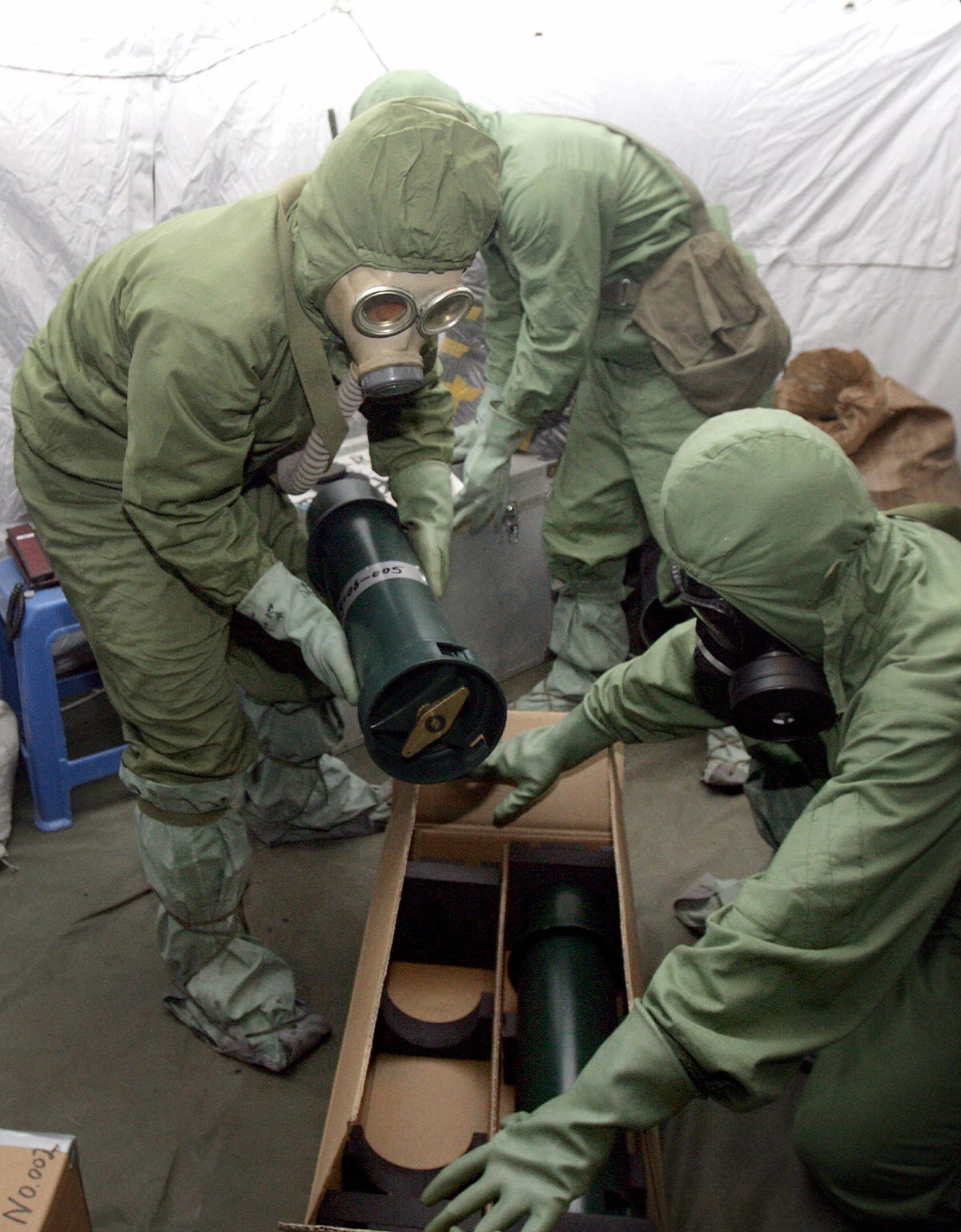Syria's chemical war (pictures)
With international norms on the use of chemical weapons allegedly violated, but weak political support for military action, what do we do?

Poisonous tools of war
While chemical weapons are stockpiled around the world, there is a long standing prohibition against using these malicious tools of war. The Syrian government’s alleged chemical attack violates international norms against the use of chemical weapons, which are capable of widespread, indiscriminate killing.
US Secretary of State John Kerry on Friday outlined details from a US intelligence report that said that 1,429 people were killed in a Syrian chemical weapons attack outside of Damascus, Syria on August 21, including at least 426 children. Kerry said findings pointing to Syrian President Bashar al Assad's regime as responsible for launching the attack against civilians "are as clear as they are compelling."
All but seven countries are signatories of the 1993 arms control agreement, the Chemical Weapons Convention, which outlaws the production, possession, and use of these poisonous tools. Syria is one of the few nations which has not agreed to the CWC prohibitions, and thus it has never made a formal declaration of its stock.
We don't know exactly what chemical weapon's Syria has, but other countries have worked to eliminate their chemical stockpiles. Here, Chinese Abandoned Chemical Weapons experts pack away the canisters containing mustard gas that was removed from the chemical bombs excavated at a site, which is opposite a Chinese middle school in Mudanjiang, northeastern China's Heilongjiang province in 2006.
US Navy is already prepared
While the United Nations investigates and plans a course of action, US forces are getting in to position for possible military action.
In a response to the alleged chemical weapons attack on its own people by the Syrian regime, the USS Mahan, the USS Barry, the USS Ramage, and the USS Gravely, all Arleigh Burke-class destroyers, are en route or in position in the eastern Mediterranean for a possible strike on Syrian military assets.
Here, the guided-missile destroyer USS Ramage is seen underway in the Atlantic Ocean on September 4, 2008.
US Navy destroyers
The US Navy continues to research better ways to wage war -- including lasers -- but for now the US Navy's guided-missile destroyers, like the USS Barry seen here, are equipped with Tomahawk cruise missiles.
Sarin gas, a lethal nerve agent
Sarin gas, also known as GB, is believed to have been used by the government during the Syrian civil war, but is yet unconfirmed. This photo shows an M190 Honest John chemical warhead section containing demonstration M134 GB Sarin cluster bomblets circa 1943.
Like other nerve agents, man-made sarin attacks the nervous system, interrupting the nerves in muscles. Death will usually occur following convulsions and paralysis as a result of asphyxia due to the inability of the muscles involved in breathing to function.
Just slightly heavier than air, sarin gas is especially deadly in urban areas, settling into human occupied areas close to the ground. Easy to make, the weaponized gas can waft into even well fortified bunkers and penetrate buildings.
Chemical weapons chart
This chemical weapons chart, posted aboard the USS Hornet, now docked in Alameda, Calif., shows the different types of weaponized chemicals one might encounter during warfare, along with best practices and methods of managing the risks.
The Chemical Weapons Convention
This map shows international participation in the Chemical Weapons Convention. The light green countries have signed and ratified the CWC, the dark green depicts countries acceding or succeeding, the yellow countries have only signed, and the red countries are non-signatory.
The Convention is designed to ensure that toxic chemicals are only developed and produced for purposes unrelated to chemical weapons. According to the Organisation for the Prohibition of Chemical Weapons, toxic chemicals are widely used in commercial industrial production as a basic raw material, or as anti-neoplastic agents, which prevent the multiplication of cells, and as fumigants, herbicides, or insecticides.
Such chemicals are considered chemical weapons if they are produced and stockpiled in amounts that exceed requirements for those purposes that are not prohibited under the convention.
Israel's 'Iron Dome' defense
An "Iron Dome" short-range missile defense system is pictured near the northern Israeli city of Haifa on January 28, 2013. The Iron Dome defense missile system is designed to intercept and destroy incoming short-range rockets and artillery shells.
Fearing a retaliatory strike in response to any US military action, or that Syrian chemical weapons could fall into the hands of Islamist militants, Israel is taking steps to defend itself.
Chlorine suspected in March attack
Soldiers arm their tanks as Israeli troops start preparations at a deployment area during a military exercise on August 28, 2013, near the border with Syria, in the Israeli-annexed Golan Heights.
Chlorine was suspected, but never confirmed, as the chemical agent used in an attack on March 19, 2013, in the village of Khan al-Assal in northern Syria.
Chlorine gas
Here is the aftermath of a German chlorine gas attack against a British emplacement in Fromelles, France, during World War I. Chlorine gas precipitates death by asphyxiation. The use of masks is an effective military countermeasure, however when used in unprepared urban civilian populations, chlorine gas can cause widespread casualties.
DIY gas masks
Trying on a homemade gas-mask
Abu Tarek, a 74-year-old retired army officer, tries on a homemade gas mask in Syria's northern Latakia province on April 26, 2013.
With international norms on the use of chemical weapons allegedly violated, but weak political support for military action, what do we do?
See full coverage of the Syria civil war, and the rapidly widening international repercussions, here.

